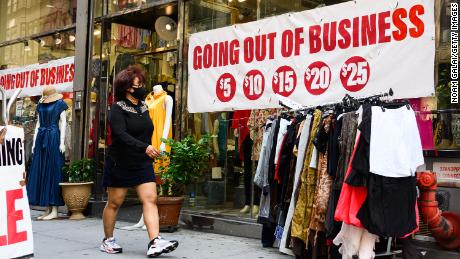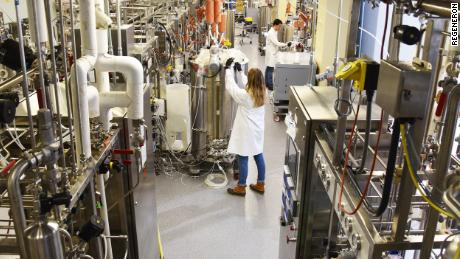Goldman Sachs: A Democratic sweep would mean faster economic recovery
Goldman Sachs is telling its clients the exact opposite.
In fact, “all else equal, such a blue wave would likely prompt us to upgrade our forecasts,” Goldman Sachs chief economist Jan Hatzius wrote in a Monday report.
It’s true that if Democrats sweep into power early next year, it would likely translate to higher taxes and regulation. Such a reversal from the Trump agenda could eat into corporate profits and the earnings for affluent families.
Goldman Sachs wrote that a blue wave would “sharply raise the probability” of a fiscal stimulus package of at least $2 trillion shortly after the January 20 inauguration. The bank also cited Biden’s longer-term spending plans on infrastructure, climate, health care and education.
Taken together, this spending “would at least match the likely longer-term tax increases on corporations and upper-income earnings,” Goldman Sachs wrote.
“It would likely result in substantially easier US fiscal policy, a reduced risk of renewed trade escalation, and a firmer global growth outlook,” the report said.
Moody’s: 7.4 million more jobs under Biden’s plan
Goldman Sachs isn’t the only Wall Street firm to point out the positive benefits of a blue wave.
“The economic outlook is strongest under the scenario in which Biden and the Democrats sweep Congress and fully adopt their economic agenda,” wrote Moody’s economists led by Mark Zandi, who advised Senator John McCain during the 2008 presidential race.
Although few on Wall Street had expected a sweep for Democrats earlier this year, that thinking has changed significantly.
“We view a ‘blue wave’ as the most likely outcome of the election,” strategists at UBS wrote to clients Monday.
Polls leaning in Biden’s direction
Not only is Trump trailing nationally overall, but his lead over Biden on the economy specifically has vanished in CNN’s polling.
In May, 54% of registered voters said Trump would handle the economy better, compared with 42% for Biden. Now it’s tied, with 49% of registered voters backing each candidate. Among likely voters, Biden gets 50%, compared with 48% for Trump. That’s little changed from the last CNN poll, conducted August 28 to September 1.
Biden also holds smaller leads in Florida and Arizona. Goldman Sachs notes those battleground states “should finish their voting around midnight and could therefore resolve the uncertainty earlier than widely expected.”
‘Mixed’ impact for stocks
Looking at the bigger picture, a blue wave would create new winners and losers on Wall Street.
For instance, oil-and-gas companies, private prisons, student lenders and some banks could underperform because of the risk of new regulation. High-tax stocks that benefited from Trump’s corporate tax cut could get punished, too, but companies that would benefit from increased spending on infrastructure, education and clean energy could outperform.
“A blue wave would have mixed implications for broad US equity indices,” Goldman Sachs wrote, adding that stronger government spending and faster economic growth would be a positive for cyclical sectors of the market.
When will the Fed get off zero?
One risk for the stock market is that it alters Wall Street’s expectation of never-ending easy money from the Federal Reserve.
But if Democrats sweep in November, the economy could speed up so much that it creates long-elusive inflation, forcing the Fed to act. Goldman Sachs said its analysis suggests a blue wave could pull forward the Fed’s first rate hike by up to two years.
“The rising probability of a blue wave,” Goldman Sachs wrote, “adds to our sense that markets may have become too complacent about Fed policy.”
Even if markets object to rate hikes, average Americans would benefit if the economy is growing fast enough for the Fed to begin gradually raising interest rates.
![]()






